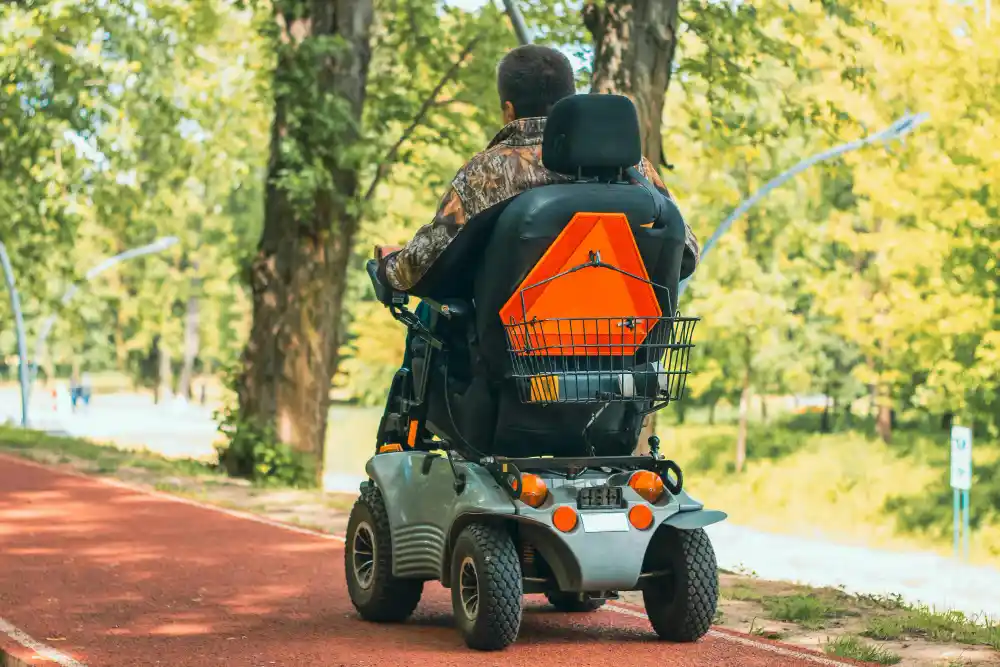Guide to Driving and Maintaining Your Mobility Scooter
Mobility scooters are a fantastic resource for anyone looking to regain their independence, offering freedom to travel comfortably and conveniently. Whether you’re a first-time user or simply need a refresher, understanding the basics of operating and maintaining your mobility scooter can ensure a safer, smoother experience. Here’s a complete guide to help you get started!
1. Getting Comfortable with Your Mobility Scooter
Before heading out, take time to familiarize yourself with your mobility scooter’s controls, features, and handling. Here’s how to get started:
- Read the Manual: Each model has unique controls, settings, and features. The manual provides specific instructions, and getting to know it will help you operate your scooter safely.
- Practice Controls: Mobility scooters typically have a throttle lever or twist-grip to control speed and a tiller (steering column) for steering. Practice using the throttle gently to get a feel for the scooter’s speed and maneuverability.
- Test the Brakes and Speed Settings: Scooters often have multiple speed settings for indoor and outdoor use. Test your scooter’s braking capabilities at low speeds, so you know how it will respond when you need to stop.
2. Essential Tips for Driving Your Mobility Scooter
When driving your scooter, keep safety in mind for a pleasant and secure experience. Here are some basic driving tips:
- Use Low Speeds Indoors: Indoors, especially in smaller spaces, keep your scooter in a low-speed setting. This helps prevent accidents and allows for better control.
- Maintain Awareness Outdoors: When outdoors, stay alert to pedestrians, vehicles, and any obstacles. Cross streets at designated crossings and always yield to pedestrians.
- Navigate Obstacles with Care: Watch for curbs, steps, and uneven surfaces. Most mobility scooters are built for smooth surfaces, so avoid terrain that may damage the scooter or cause you to lose balance.
- Slow Down on Turns: Take corners and turns at a slower pace to maintain stability. Mobility scooters are heavier than standard wheelchairs, so slowing down helps prevent tipping.
- Use Lights and Indicators: Many scooters come with headlights, indicators, and even hazard lights. Use them when visibility is low or when navigating busy areas to stay visible to others.
3. Basic Mobility Scooter Maintenance
Regular maintenance helps keep your scooter reliable, safe, and efficient. Here’s how to ensure your scooter stays in top condition:
- Battery Care:
- Charge Regularly: Charge your battery after every use to keep it in good condition. Avoid letting it drain completely, as this can shorten battery life.
- Use the Correct Charger: Always use the charger provided with your scooter or a compatible one recommended by the manufacturer.
- Avoid Extreme Temperatures: Store your scooter in a cool, dry place to prevent battery damage from extreme temperatures.
- Tire Maintenance:
- Check Tire Pressure: If your scooter has pneumatic (air-filled) tires, check the pressure regularly to ensure they’re properly inflated. Low pressure can affect handling and tire longevity.
- Inspect for Wear and Damage: Look for signs of wear or punctures, particularly if you often drive outdoors. Replace tires as needed to maintain safety.
- Cleaning and Lubrication:
- Keep it Clean: Regularly wipe down your scooter to remove dust, dirt, and grime, especially if you’ve been outdoors. Avoid using high-pressure water, as it may damage electrical components.
- Lubricate Moving Parts: Periodically apply a light lubricant to joints, levers, and the steering mechanism to keep them operating smoothly.
- Brake and Control Check: Test your brakes and throttle regularly to ensure they’re responsive. If you notice any lag or unusual noises, consult a technician.
4. Troubleshooting Common Issues
Even with regular maintenance, you may encounter occasional issues with your scooter. Here’s how to troubleshoot common problems:
- Battery Won’t Charge or Hold Charge: First, check that the charger is connected correctly. If the issue persists, your battery may need replacing.
- Scooter Won’t Start: Check the battery connection and ensure it’s charged. If that’s not the issue, inspect the ignition key and fuse.
- Strange Noises: Squeaking, grinding, or other noises often signal the need for lubrication or part replacement. If in doubt, consult a professional for repair.
- Reduced Speed or Power: This can be due to a weak battery, low tire pressure, or an issue with the throttle. Address these areas, and if the problem remains, have it inspected by a technician.
5. Safety and Legal Considerations
Understanding and following safety and legal guidelines can help prevent accidents and ensure you’re compliant with local regulations:
- Know the Local Laws: Mobility scooter regulations vary by location. In some places, scooters are only permitted on sidewalks, while in others, they’re allowed on certain roads. Research your area’s rules to stay compliant.
- Use Reflective Gear: For added visibility, especially in low-light conditions, consider adding reflective tape to your scooter and wearing reflective clothing.
- Insurance: While insurance isn’t always required, it can be useful for covering accidents or repairs. Explore your options for peace of mind.
- Regular Check-Ups: Consider taking your scooter to a service provider for an annual check-up, ensuring that all components are functioning properly and safely.
6. Enhancing Your Driving Experience with Accessories
To maximize comfort and utility, consider some popular accessories for your mobility scooter:
- Storage Options: Attach a basket or bag to store personal items and shopping. Many scooters offer options like rear storage boxes or under-seat baskets.
- Seat Cushions: If you’re using the scooter for extended periods, a seat cushion can provide added comfort and support.
- Phone Holders and USB Ports: Some scooters come with phone holders or USB charging ports, making it easy to keep devices powered on the go.
- Canopies and Rain Covers: For added protection in rainy weather, invest in a canopy or rain cover.
- Safety Features: Add mirrors, a safety flag, or extra lights to improve visibility and awareness.
Final Thoughts
Driving a mobility scooter can open up a world of possibilities, from running errands to exploring your local neighborhood. By learning to operate it safely and maintaining it regularly, you can enjoy the benefits of increased mobility with confidence. Remember that regular check-ups, practicing safe driving, and addressing minor maintenance needs will ensure your scooter serves you well for years to come.
Enjoy the journey, and embrace the freedom that comes with your mobility scooter!



